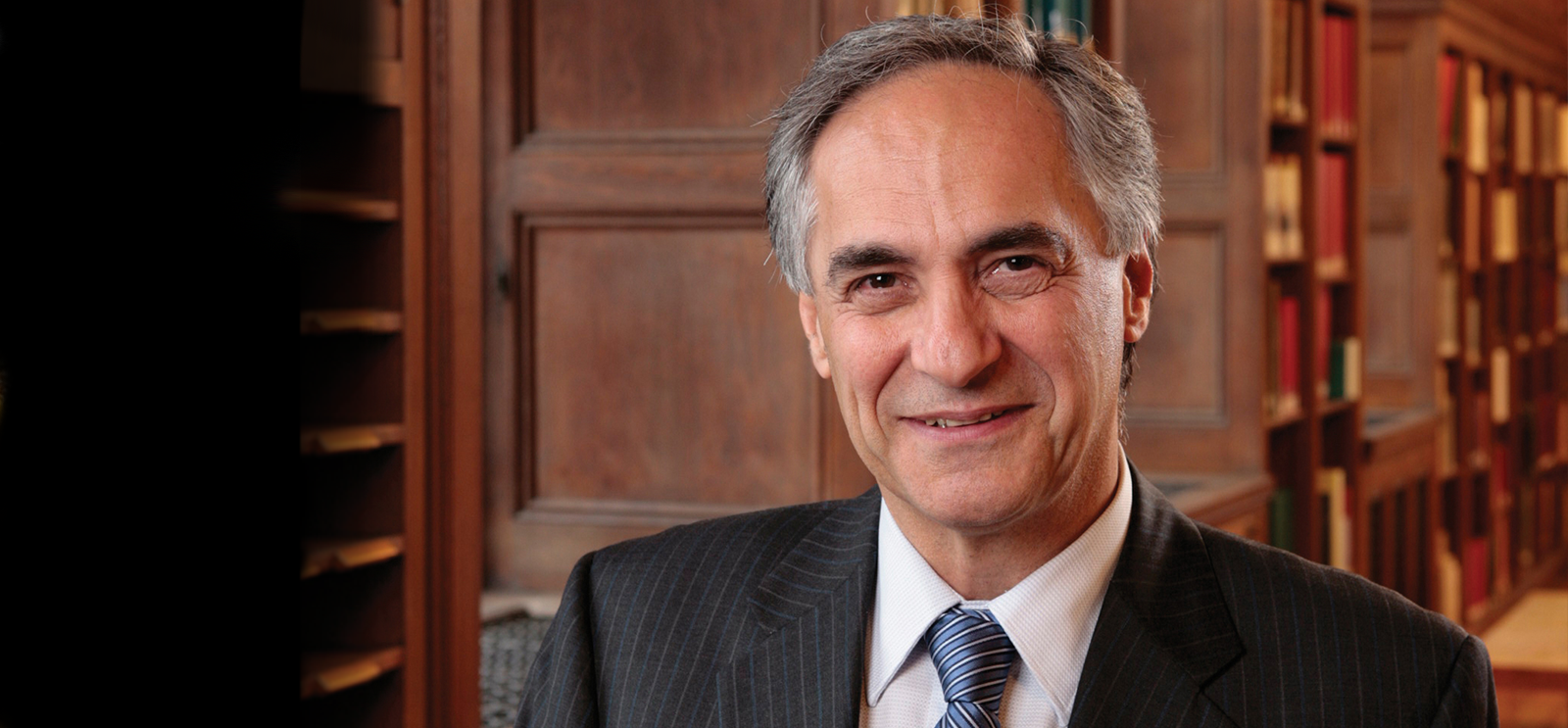
Robert J. Zimmer, who began his sixth year as president of the University of Chicago in July, leads off a new Magazine department in which University leaders discuss initiatives and issues of importance to the UChicago community. (Photo by Peter Kiar)
The University makes some departures rooted in its enduring values.
The University of Chicago is faced every day with decisions about balance. The approaches of the past that have led to a history of remarkable achievement confront innovation driven by internal intellectual and educational urgency as well as a changing ambient environment. The resulting tension can be positive. The lessons and achievements of the past provide a potential context for innovation, while proposals for new endeavors may create great opportunity and lead us to test embedded assumptions.
There are also dangers within this tension. Without recognizing the enduring values of the University and ensuring they are embedded in new opportunities we pursue, we could move in directions that do not reinforce our fundamental missions and distinctiveness. On the other hand, too rigid an adherence to the specifics of the past can leave us with a paralyzing fear of major new undertakings and opportunities. Perhaps our single greatest danger is potential complacency—feeling too comfortable with our achievements without demanding of ourselves the ambition to find for the future innovative manifestations of the enduring values that have guided our past.
Within the past year, we have made significant progress on a number of new initiatives that have been driven by innovative faculty, which, aside from the merits and excitement of the projects themselves, exhibit two common features. They each represent a departure for the University, and in each case, the University is taking an approach that is distinctive from those of other institutions.
This year we appointed the inaugural Pritzker director of the new Institute for Molecular Engineering. Given that the University has not had a formal engineering program nor offered degrees in any type of engineering, this initiative is a major step in an area in which we believe we can make a distinctive and important contribution. The long-standing position of the University against having engineering was based on the difference between science as a study of natural phenomena and engineering as the design and creation of man-made artifacts. However, with the evolution of technology the boundary between science and engineering has in many areas become blurred and even disappeared. One such powerful technological change is the ability to manipulate and design at the molecular scale. We expect that the Institute for Molecular Engineering will have deep connections to both physical and biological sciences and anticipate degree programs at both the undergraduate and graduate levels. It will offer a distinctive intellectual configuration for the area of molecular design. The immediate task for the director is to recruit a group of faculty leaders who will in turn define the specific directions of the institute.
The University took another major step this year in opening the new Center in Beijing, a new component in our approach to globalization. We have always been a University with an international perspective. About 30 percent of our faculty and 25 percent of our total student body are not US nationals. To support the work of our faculty and students in all fields who are interested in China and the extraordinary changes taking place there, as well as to enable multiple ongoing collaborations in China, a faculty committee recommended opening a major new center in Beijing. The first year of the center has been a great success and we expect the activity to continue to build over time. Here again, the approach we have taken in China is quite different from that of other universities.
Another arena in which we have embarked on a different and ambitious approach is that of pre-K–12 school education. This is an area that has profound human consequences and great meaning for our society as a whole. Several years ago, the University closed our Department of Education. This was not an easy decision, as the department represented a tradition that went back to John Dewey, who was recruited to the University by our first president, William Rainey Harper. In its place, however, a new, powerful, and distinctive approach to this subject has emerged at the University. This is embodied in our Urban Education Institute (UEI), which runs four charter school campuses on the South Side of Chicago, the Consortium on Chicago School Research, and an Urban Teacher Education Program. Alongside UEI, the Committee on Education is a multidisciplinary academic unit that brings the power of the disciplines to bear on issues of pre-K–12 education. One goal of this effort is to produce understanding about scalable innovation in the charter schools and the creation of tools to help implement change at scale. This is an example of a decision to realize the faculty's ongoing commitment to understanding and impact in an important field, but to do so in new and imaginative ways.
Finally, this spring saw the opening of the new Mansueto Library adjacent to Regenstein. While many other universities are only building off-site warehouses for certain library holdings, the Mansueto Library is a reflection of our commitment to continue to make materials readily available to those who need it for their research. At the same time, the structure of the Mansueto Library is a dramatic innovation in storage, matching its dramatic architectural design.
The tension between continuity and change will always be with us. It is our collective responsibility as a community to use this tension productively to ensure that our future is filled with new manifestations of the imagination and distinction that have represented the best of our past.
